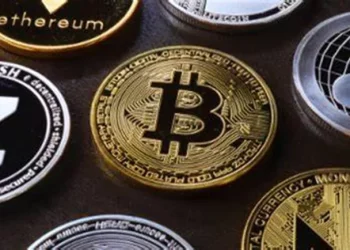An anonymous developer (whose identity has not been revealed) claims to have created more than 100 meme coins and bluntly stated in a recent interview that carpet pulling is the easiest way to make money in the cryptocurrency world. This statement shocked the entire industry and exposed deep holes in the lack of regulation and investor protection in the meme coin market.
The “Secret to Wealth” of Meme Coin Developers: Quick Harvest and Regulatory Blind Spots
According to the developers, its mode of operation is usually:
Fast token issuance: By using ready-made smart contract templates, new tokens can be deployed on public chains such as Ethereum and BNB Chain in under an hour at a cost of just a few hundred dollars.
Fake marketing: Hiring “influencers” to hype up concepts (such as “AI + meme coins” and “eco-themed tokens”) through social platforms such as Telegram and Twitter, spending money to list on non-top exchanges, and creating the illusion of liquidity.
Deceptive buying and fleeing: After a large influx of retail investors drove up the price of the coin, the developer sold all the tokens through a reserved “Genesis Wallet” (aka “rug pull”), then logged out of the social media accounts and disappeared.
“A successful carpet pull can net hundreds of thousands of dollars, which is 100 times faster than a legitimate startup,” the developer said. “Regulation simply can’t keep up with us. By the time the user reported the incident to the police, the money had already been washed away through the mixer.
The “dark data” of the meme coin market
Scale of fraud: According to on-chain analytics platform Certik, there were more than 23,000 causal-coin-related carpet pulling incidents worldwide in 2024, involving a total of $4.7 billion, an increase of 210% compared to 2023.
Lifetime: 90% of meme coins plummeted by more than 95% within 72 hours of issuance, and only 5% of projects survived for more than a week.
Target Audience: More than 60% of the victims are novice investors who lack crypto knowledge, mainly in regions with weak regulations such as Southeast Asia and Latin America.
“The meme coin market is a ‘stupid game,'” notes crypto security expert Sophia Li. “Developers exploit human greed and information gaps to build harvesters in regulatory blind spots.”
Regulatory lag and investors are in a dilemma of bailing themselves out
Although some countries have taken regulatory measures against meme coins (e.g., the US SEC treats some meme coins as securities, and the EU MiCA requires token issuers to disclose their identities), there are significant loopholes at the enforcement level:
Cross-border crimes: Developers often hide on anonymous networks or in countries with lax regulations, such as the United Arab Emirates and Singapore, making judicial tracing extremely difficult.
Technical threshold: Ordinary investors find it difficult to identify the address of the “Genesis Wallet” or the backdoor of the smart contract through on-chain data, and often find out that they have been deceived after the fraud is revealed.
In response, the industry called on investors to adopt a “defensive strategy”
The “three nos” principle: don’t invest in unproven new projects, don’t follow social media hype, and don’t invest more money than you can afford to lose.
Tool-assisted: Use on-chain analytics tools such as DeBank and Nansen to query the liquidity distribution of tokens and changes in developer holdings.
Regulatory reporting: In regions such as the European Union and the United States, suspicious projects can be reported through online platforms such as FINMA and FCA.
Industry Reflection: The Balance Between the Value and Risk of Meme Coins
Not all meme coins are scams. For example, leading meme coins such as DOGE and Shiba Inu have developed community consensus and real-world use cases (such as giving rewards and charitable donations), but these projects only account for 0.1% of the total market.
“The core paradox of the meme coin is that it is both a manifestation of the decentralized spirit of blockchain and a magnifying glass of human weakness,” said crypto economist Marcus Wang. “Investors must be well aware that when the only value of a project is ‘the next person will take over,’ it is essentially a Ponzi scheme.”
Experts warn: Beware of “get rich overnight” narratives
As meme coins combine with concepts such as AI and Web3 to form new types of scams (such as the recent disappearance of the “GPT coin”), investors need to be more cautious about emerging concepts. As the aforementioned developer admits: “As long as human greed exists, the memecoin scam won’t go away – but smart people won’t be the last to stick to it.”
Related Topics:














